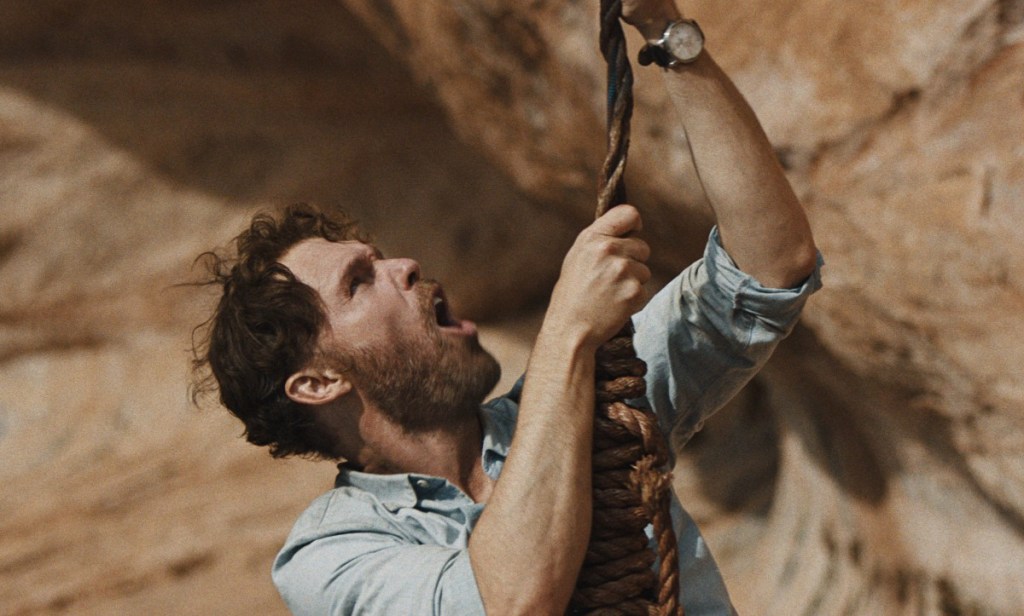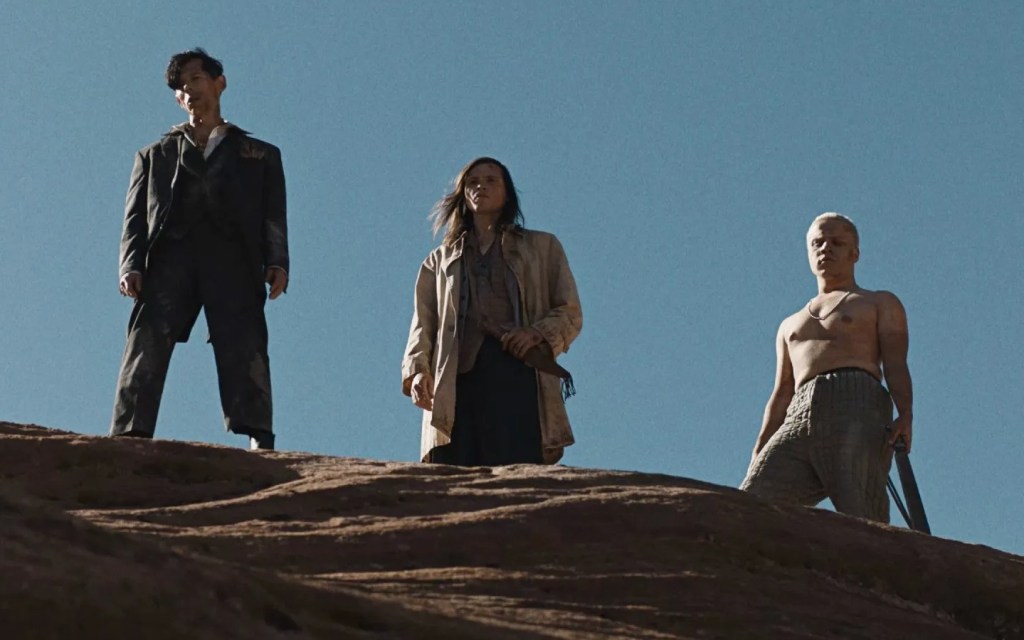Barnaby Clay’s The Seeding takes a long lingering look at survival in the harsh desert in unusual circumstances.
Wyndham Stone (Scott Haze) is hiking in the North American desert when a seemingly lost child drags him into a fight for his life as a gang of feral kids trap him in a pit-like environment with no easy escape. In the pit is a dilapidated house owned by a woman named Alina (Kate Lyn Sheil). She nurses him back to health as he tries his damnedest to escape the fate that has befallen her, but there’s a disturbing motive behind his newfound incarceration that ensures he will struggle to make it out alive.
Clay’s stock and trade has been in music videos, but he’s long dabbled in horror via short films. This is his second film, and as the other was a music documentary, this marks his feature film debut. Spawned from Clay’s long-gestating idea, The Seeding wears its director’s experience and influences on its sleeve.

The folk horror of the story is restrained, but noticeable enough once it gets moving. Clay takes the uncomfortable desert horror atmosphere of films like Wake in Fright and Greg McLean’s Wolf Creek and lets it bleed into the folk horror of the likes of The Ritual and Village of the Damned.
There’s something quite insectile about the way Wyndham is lured into his nasty situation and how it subsequently plays out. There are a few readings to be made out of what the pit represents, some more obvious than others, but the brutal and methodical ritualistic degradation of Wyndham has a lot in common with insect behavior. The feral children especially show this in how they return to the pit and bring necessary supplies to keep its inhabitants alive and fairly well and attack any perceived outside threat that dares to get close.
Then there’s Alina, played by Kate Lyn Sheil. She’s in the same predicament as Wyndham, but appears to be more than used to it at this point. She’s demure, quiet, and caring, but the flashes of defiance and danger make you question the effect that living in a rock pit has had on her in a psychological sense. It’s a performance that rightly stands front and center of the story whilst remaining elusive enough to give room for some mystique.
Once the story turns a particular corner, it drags its heels for a bit, and there’s a repetitious nature to events that seem to be circling toward its conclusion. I really like the slow-burn nature of The Seeding, but this is the point where it needed to be punchier. It takes some of the sting out of the finale because it begins to feel inevitable rather than merely a possibility.

The ending retains some weight though, and I came away from The Seeding with appreciation for its atmosphere and audiovisual synthesis. The American wilderness provides vast expanses that can easily hide their own pocket worlds, and what Wyndham stumbles into is just that.
Much of your engagement with The Seeding will be based on how difficult you find it to get behind an unlikable protagonist, and while Wyndham is no villainous cad, he doesn’t endear himself with his abrasive attitude. It’s the point of the character and the structure of the film isn’t really set up for you to root for him all that long, but on a basic level,you just know that’s something viewers will bounce off.
Also despite having grisly scenes and very much dipping its toes in the survival sub-genre, The Seeding is more arthouse than grindhouse, and that takes a little adjustment after the opening 20 minutes or so.
The Seeding is a bleak psychological horror that revels in making you uncomfortable in more than the obvious ways. That doesn’t always work as intended, but the mood that emanates from it sticks to you like the desert dust.
Score 7/10
As ComingSoon’s review policy explains, a score of 7 equates to ”Good”. A successful piece of entertainment that is worth checking out, but it may not appeal to everyone.










